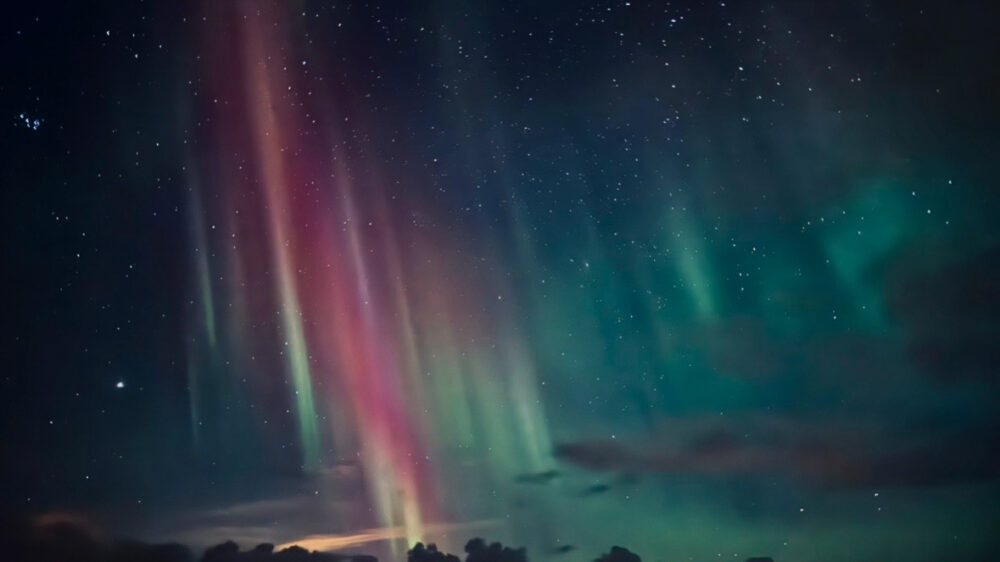Auroras — dazzling phenomena that paint the night sky with a myriad of colors — have fascinated humans for thousands of years. Occurring in both the Northern and Southern hemispheres, they are known as the aurora borealis and australis, or northern and southern lights, respectively. At the start of 2024, auroras entered a super season, meaning their activity will peak for the next couple of years.
Auroras are formed when energized particles, or ions, from the sun collide with the Earth’s upper atmosphere at speeds up to 45 million miles per hour. The sun is continuously releasing energy and ions into space, with the most common form being solar winds. Aside from constant solar winds, there are also less common solar storms, or coronal mass ejections, that release an extremely large amount of energy at once. The Earth’s magnetic field protects its surface by redirecting the ions towards the North and South Poles. Without the magnetosphere, solar energy would destroy the atmosphere and prevent life from thriving.
Though most of the solar winds are blocked, ring-shaped ionospheres near the poles about 1000 kilometers above the surface trap ions for a short while. Ionospheres are a shell of electrons and electrically charged atoms in the Earth’s upper atmosphere. The interactions between the energized solar particles and the gases in the Earth’s atmosphere create the stunning visuals of auroras. Oxygen emanates green and red lights while nitrogen shines blue and red. Hydrogen and helium also result in blue and purple, but these shades on the electromagnetic spectrum are rarely detectable by the naked eye.
“The interactions between the energized solar particles and the gases in the Earth’s atmosphere creates the stunning visuals of auroras.”
The most vibrant auroras happen when the solar activity is the strongest, which is why auroras will be at their peak for the next few years. The sun is currently approaching a solar maximum, or its highest rate of activity, after its solar minimum in December 2019. Solar cycles are periods of solar activity driven by the sun’s magnetic field and defined by the frequency and intensity of the sunspots visible on its surface. Although scientists cannot say for certain exactly when the sun’s activity will reach its peak, the National Oceanic and Atmospheric Administration’s Space Weather Prediction Center recently predicted it to be between January and October of 2024. This prediction is based on historical records, statistics, and models of the solar dynamo, which is the flow of ionized gases inside the sun that generate its magnetic field.
Two major factors are causing the coming super season. First, the current solar cycle is classified as “moderate.” This means that, in contrast to “strong” cycles whose activity peaks last for just less than a year, it will likely produce a flat and extended solar maximum for about two years and consist of two or more sub-peaks of activity during this timeframe. Second, the characteristics of active regions on the sun vary throughout the solar cycle. Since the sun is in the declining phase of the cycle, there is a larger proportion of giant and more magnetically complex sunspots, which are more prone to solar flares that would trigger strong auroras on Earth. Because of these factors, the best auroras in a solar cycle happen several years after the peak of the cycle itself.
With the super season on the horizon, this is one of the best chances to be amazed by one of the prettiest natural phenomena Earth has to offer.




